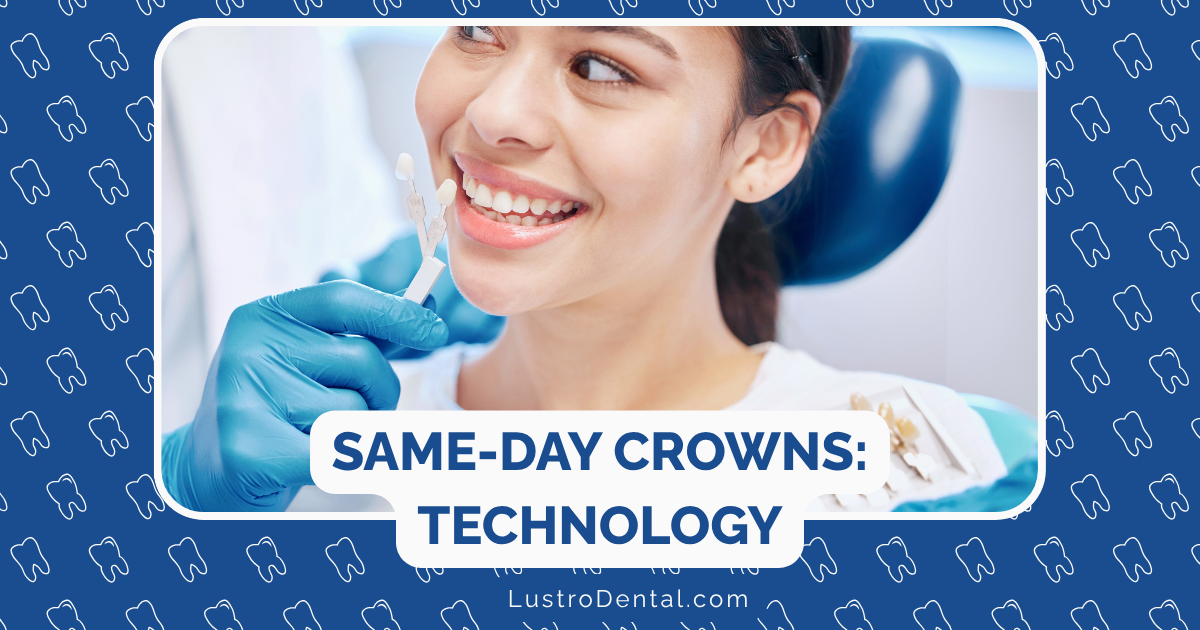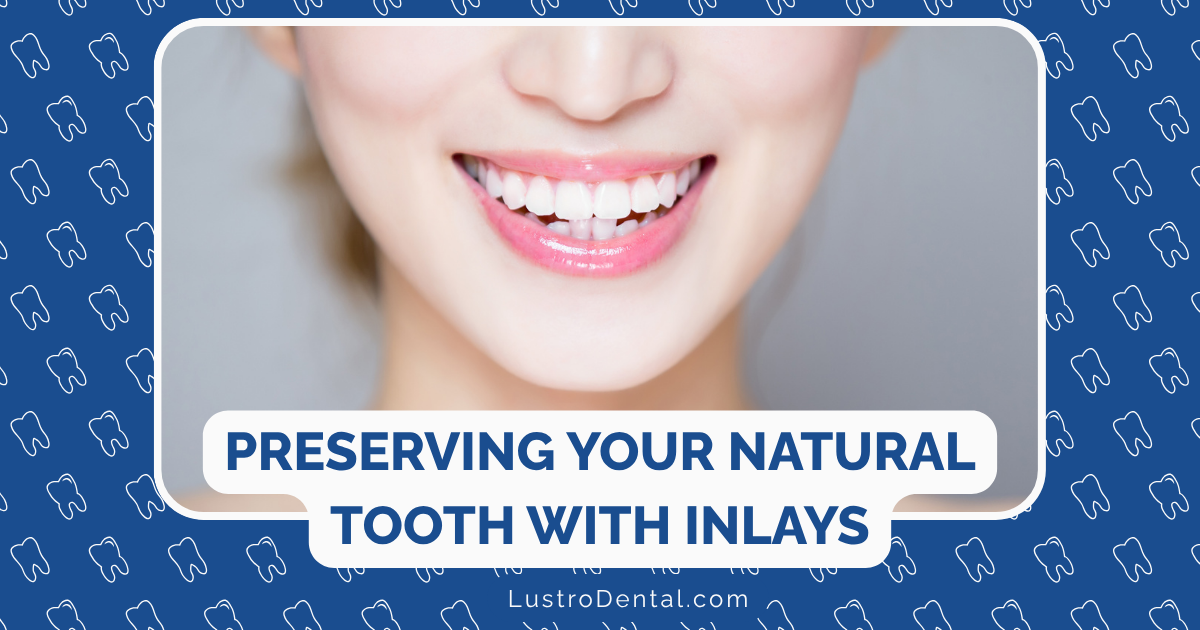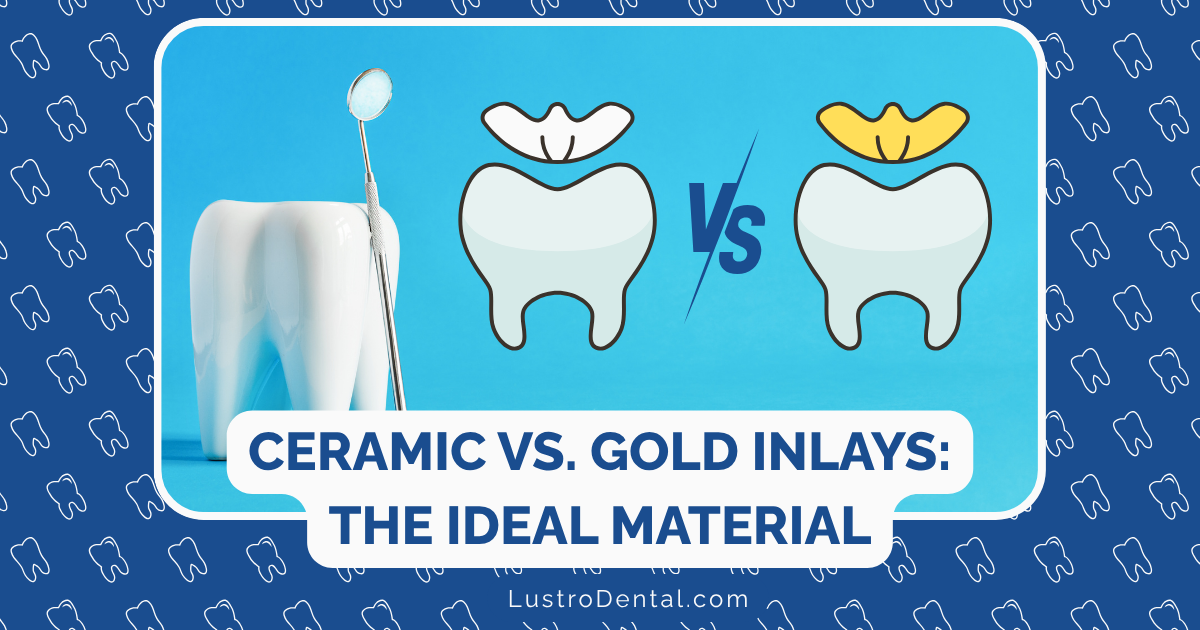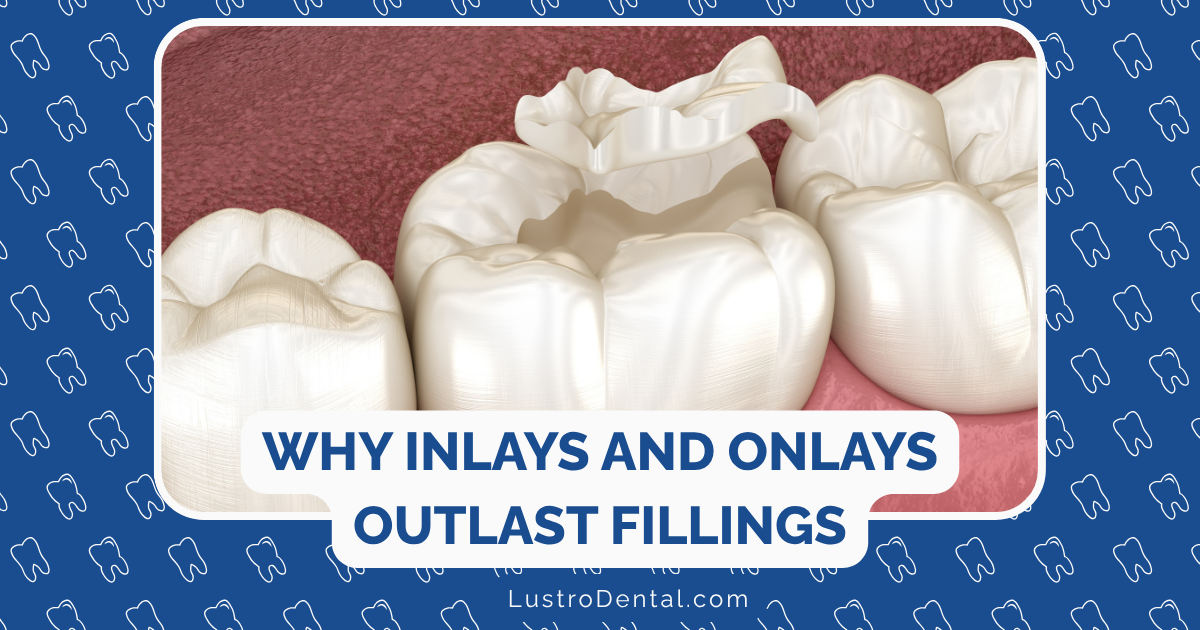Same-Day Crowns: How CAD/CAM Technology Has Transformed Restorative Dentistry

Remember when getting a dental crown meant at least two appointments, uncomfortable impressions that made you gag, temporary crowns that sometimes fell off, and weeks of waiting? If you’ve avoided needed dental work because of these hassles, I have good news: those days are rapidly becoming history thanks to revolutionary CAD/CAM technology.
Same-day crown technology has fundamentally changed the patient experience in restorative dentistry. As someone who’s helped countless patients transform their smiles, I’ve witnessed firsthand how this innovation has made quality dental care more accessible and comfortable than ever before.
The Evolution of Dental Crowns: From Weeks to Hours
Traditional crown procedures have followed the same basic process for decades:
- First appointment: Prepare the tooth, take messy impressions, place a temporary crown
- Wait 2-3 weeks while a dental lab creates your permanent crown
- Second appointment: Remove the temporary, check the fit of the permanent crown, and cement it in place
This approach worked, but it had clear drawbacks. Temporary crowns could break or dislodge. The impression material was uncomfortable for many patients. And the multi-appointment process was disruptive to busy schedules.
Enter CAD/CAM technology—specifically, systems like CEREC (Chairside Economical Restoration of Esthetic Ceramics) and Planmeca FIT. These systems have condensed the entire crown process into a single visit lasting about 2 hours.
As Dr. James Reynolds, a prosthodontist at the University of Michigan School of Dentistry, explains: “CAD/CAM technology represents the biggest leap forward in restorative dentistry in the past 30 years. We’re delivering restorations that are not only more convenient but often more precise than traditional methods.”
Understanding CAD/CAM Technology: How Does It Work?
CAD/CAM stands for Computer-Aided Design and Computer-Aided Manufacturing. In dentistry, this technology enables the digital design and creation of dental restorations. Here’s how the process typically unfolds:
1. Digital Impressions
Instead of traditional putty impressions, an intraoral scanner captures thousands of images of your prepared tooth and surrounding teeth. These images are instantly assembled into a detailed 3D model on a computer screen.
According to a 2023 study in the Journal of Prosthetic Dentistry, digital impressions are not only more comfortable for patients but also deliver accuracy within 25 microns—about one-third the width of a human hair.
2. Computer-Aided Design (CAD)
Using specialized software, your dentist designs your crown directly on the digital model. You can actually watch as they perfect the shape, contours, and occlusion (how your teeth fit together when you bite).
The software analyzes your bite and suggests the optimal crown design, which your dentist can then customize to match your existing teeth perfectly.
3. Computer-Aided Manufacturing (CAM)
Once the design is finalized, the information is sent to an in-office milling machine. This precision instrument carves your crown from a solid block of ceramic material in about 15 minutes.
Some advanced practices are now incorporating 3D printing technology alongside or instead of milling for certain applications, further expanding what’s possible with same-day restorations.
4. Finishing and Placement
After milling, your dentist adds characterization and glazing to the crown to match your natural teeth, then fires it in a special oven to strengthen the ceramic. The completed crown is then checked for fit and cemented in place—all within a single appointment.
The Materials Revolution: Beyond Basic Ceramics
CAD/CAM technology has evolved hand-in-hand with advanced dental materials. Today’s same-day crowns are typically milled from:
- Lithium disilicate: Combines excellent aesthetics with impressive strength
- Zirconia: Incredibly strong material ideal for molars and patients who grind their teeth
- Nano-ceramic resins: Hybrid materials that blend the benefits of ceramics and composites
According to recent research from the American Dental Association, modern ceramic materials used in CAD/CAM crowns show survival rates comparable to traditional gold restorations, which have long been considered the gold standard for durability.
Dr. Sarah Chen of the International Digital Dental Academy notes: “The materials we’re using today with CAD/CAM systems offer an unprecedented combination of aesthetics, strength, and biocompatibility. We’re seeing 10+ year success rates that rival or exceed those of traditional lab-made restorations.”
7 Ways CAD/CAM Has Transformed the Patient Experience
The benefits of same-day crown technology extend far beyond mere convenience:
1. Preservation of Tooth Structure
Digital design allows for more conservative preparations, meaning more of your natural tooth structure can be preserved. This biomimetic (life-mimicking) approach supports long-term tooth health.
2. Improved Fit and Function
Studies published in the Journal of the American Dental Association show that CAD/CAM crowns often demonstrate superior marginal fit compared to traditional lab-fabricated crowns, with gaps averaging less than 50 microns (invisible to the naked eye).
3. Enhanced Aesthetics
The latest CAD/CAM systems can replicate the translucency, color gradients, and surface characteristics of natural teeth with remarkable precision. Many patients report that they can’t tell their same-day crown from their natural teeth.
4. Elimination of Temporary Crowns
Temporary crowns can be uncomfortable, prone to coming loose, and don’t always protect the tooth adequately. Same-day technology eliminates this step entirely.
5. Reduced Sensitivity
Without a temporary phase where the prepared tooth might be exposed to temperature changes and pressure, many patients experience less post-procedure sensitivity.
6. Lower Risk of Contamination
The prepared tooth is only exposed for a short time and is restored the same day, reducing the risk of bacterial contamination that can lead to complications.
7. Eco-Friendly Approach
Digital impressions eliminate the need for disposable trays and impression materials. The precise milling process also generates less waste compared to traditional lab fabrication methods.
The 2025 Landscape: What’s New in CAD/CAM Dentistry
The field continues to evolve rapidly. Here are some of the most exciting developments in CAD/CAM dentistry for 2025:
Artificial Intelligence Integration
AI algorithms are now being incorporated into CAD/CAM systems to optimize crown design based on thousands of successful cases. These systems can suggest ideal contours and contact points based on your specific oral anatomy.
According to research from the Digital Dentistry Journal, AI-assisted designs require 30% fewer adjustments than those created through traditional digital workflows alone.
Expanded Material Options
The latest materials combine aesthetics and strength in ways previously thought impossible. For example, new gradient zirconia materials offer the strength of traditional zirconia with improved translucency for front teeth.
Streamlined Workflows
Today’s systems are more user-friendly than ever, with simplified workflows that reduce the learning curve for dentists and treatment time for patients.
Integration with Other Digital Technologies
CAD/CAM systems now commonly integrate with cone beam CT scanners for comprehensive treatment planning, particularly for complex cases involving implants or significant reconstruction.
3D Printing Applications
While milling remains dominant for permanent crowns, 3D printing is increasingly used for surgical guides, models, and even some provisional restorations, expanding what’s possible in a single visit.
Is a Same-Day Crown Right for You?
While CAD/CAM technology offers numerous advantages, it’s not necessarily the optimal choice for every situation. Here are some considerations:
Ideal Candidates for Same-Day Crowns:
- Patients needing single crowns or small bridges
- Those with busy schedules who benefit from fewer appointments
- Cases where preserving maximum tooth structure is critical
- Patients who gag easily with traditional impressions
- Those who want to avoid temporary crowns
Situations Where Traditional Crowns Might Be Preferred:
- Very complex aesthetic cases in the front of the mouth (though this gap is narrowing)
- Patients with extremely deep subgingival (below the gumline) margins
- Cases requiring specialized materials not available in CAD/CAM blocks
- Some full-mouth reconstruction cases
The Cost Consideration: Investment vs. Value
Same-day crowns typically cost between $1,000 and $1,800, depending on location and specific materials used. This is comparable to traditional crown procedures in many practices, though sometimes slightly higher.
However, when you factor in the value of your time (no second appointment needed), the elimination of temporary crown issues, and the precision of the final restoration, many patients find the investment well worth it.
Most dental insurance plans cover CAD/CAM crowns at the same rate as traditional crowns, typically 50-70% after deductibles. According to the American Dental Association’s 2025 fee survey, the national average coverage for crown procedures has actually increased by 8% over the past three years as insurers recognize the long-term success rates of these restorations.
The Future Is Now: What’s Next for Digital Dentistry
The integration of CAD/CAM technology represents just the beginning of the digital revolution in dentistry. Looking ahead, we can anticipate:
- Augmented reality systems that project treatment simulations directly onto patients’ teeth during consultations
- Chairside 3D bioprinting of restorations using materials that more closely mimic natural tooth structure
- Tele-dentistry applications where specialists can remotely assist with complex CAD/CAM designs
- Self-adapting materials that respond to changes in the oral environment to prevent future decay
As Dr. Michael Zhang of the International Digital Dental Academy observes: “We’re witnessing the democratization of excellence in dentistry. Technologies that were once available only in specialized centers are now accessible in neighborhood dental offices, raising the standard of care for everyone.”
Real Patient Experiences: Beyond the Technology
While the technical aspects of CAD/CAM are impressive, what matters most is how this technology impacts real people. Here are some perspectives from patients who have experienced same-day crowns:
“I was amazed that I could watch my crown being designed on the screen. It made me feel involved in the process and confident about what was happening.” – Maria S.
“As someone who runs my own business, taking multiple days off for dental work wasn’t feasible. Getting my crown done in one visit was a game-changer.” – David T.
“I’ve had both traditional and same-day crowns, and the difference is night and day. No goopy impressions, no temporary falling off, and the final result looks completely natural.” – Jennifer R.
Conclusion: A New Standard of Care
CAD/CAM technology and same-day crowns have transformed restorative dentistry from a multi-appointment process to a streamlined, patient-friendly experience. This isn’t just about convenience—it’s about delivering better, more precise, more comfortable care.
As we look to the future, the integration of artificial intelligence, advanced materials, and enhanced digital workflows promises to make same-day dentistry even more remarkable. The days of waiting weeks for a crown are rapidly becoming a thing of the past, and that’s something worth smiling about.
If you’ve been putting off needed dental work because of time constraints or anxiety about the process, now might be the perfect time to explore what modern CAD/CAM dentistry can offer you. Your smile—and your schedule—will thank you.
Have you experienced same-day crown technology? We’d love to hear about your experience in the comments below!
Disclaimer: This article is for informational purposes only and does not constitute medical advice. Please consult with your dentist to determine the best treatment options for your specific situation.







